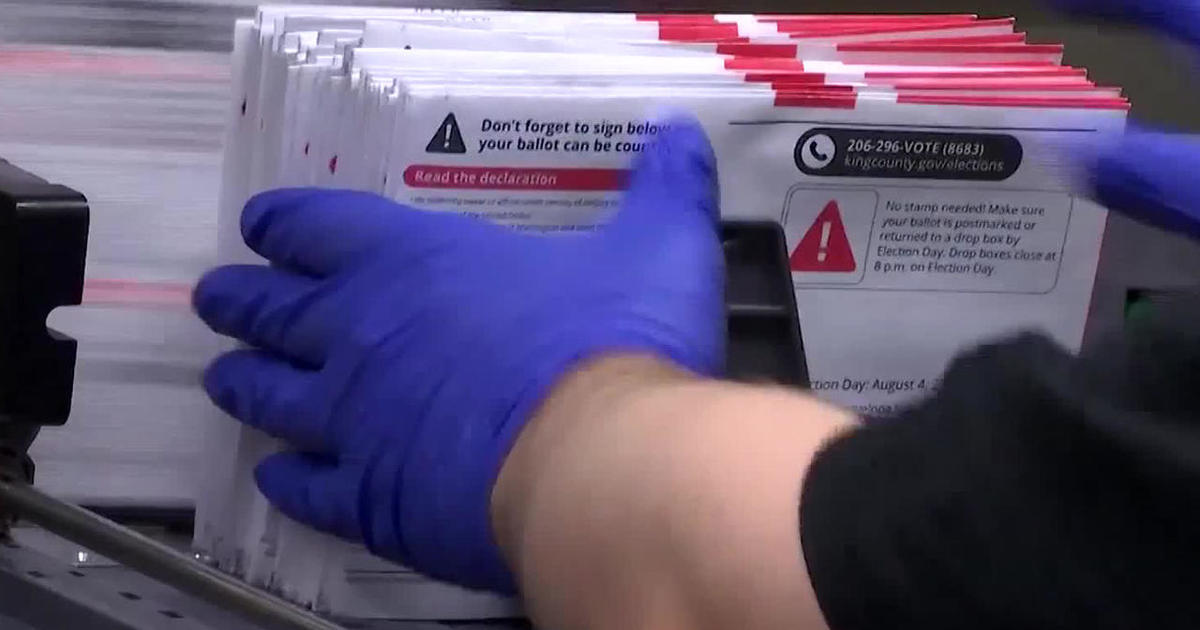The U.S. Postal Service has faced scrutiny for making major operational changes in an election year when many more Americans are mailing their ballots because of the coronavirus pandemic. But new statistics show the USPS is doing a worse job of delivering the mail on time, raising concerns that some ballots may be delayed.
The Postal Service said Friday that its on-time delivery rate for first-class mail slipped to 85.6% for the week ended October 16. That’s down from nearly 91% over a three-month period ending in June, noted Paul Steidler, senior fellow with the Lexington Institute, a public policy think tank based in Arlington, Virginia. He described the latest data on the USPS’ delivery record as “awful.”
A drop in timely mail delivery could pose a risk for voters who wait to post their mail-in ballots, Steidler said. While it’s not known how many voters plan to mail ballots in the remaining days before the November 3 presidential election, if 10 million ballots are mailed in the two days before the election, the slowdown in first-class mail suggests 1.4 million ballots could arrive after Election Day, he warned. That could be an issue for states like Arizona where all ballots are due by November 3.
“It’s disappointing that the numbers are what they are,” Steidler said, adding that he voted in person last week rather than mail a ballot. “The Postal Service itself — and this is to their credit — they said if you haven’t mailed a ballot by yesterday, that you are better off bringing it in or voting in person.”
About 30 states require that absentee ballots be received by Election Day to be counted. On Monday night, the Supreme Court quashed a Wisconsin court decision that would have given mail-in ballots an additional six days after election day to be counted.
The USPS in May recommended that voters post their mail-in ballots at least one week before election day, making October 27 the latest day, under their guidelines, to guarantee on-time delivery. More than 56 million voters requested mail-in ballots this year, and about 27 million have been mailed so far, according to University of Florida professor Michael McDonald, who is tracking early voting.
The USPS said its “No. 1 priority between now and the November election is the secure, timely delivery of the nation’s Election Mail,” spokeswoman Martha Johnson said in an email to CBS MoneyWatch. She reiterated that the Postal Service recommends mailing ballots at least a week before November 3, but added that some states may recommend leaving even more time.
Where mail delivery is slowest
Some states and regions may be experiencing even worse on-time delivery rates. That could stem from local issues, such as staff being out due to COVID-19 infections or equipment issues.
In Vermont, the breakdown of a mail processing machine drew the ire of the state’s congressional delegation earlier this month, with Senators Bernie Sanders and Patrick Leahy expressing concern about the impact on mail-in ballots, prescription medications and letters, according to the Burlington Free Press.
Postmaster general halts USPS changes until a…
03:54
A recent investigation led by Senator Gary Peters of Michigan, ranking member of the Homeland Security and Governmental Affairs Committee, which oversees the USPS, found bigger delays in many parts of the nation. According to the study, on-time first class mail delivery was below 80% in six regions, including Philadelphia and Baltimore. Delivery was even worse across parts of Michigan, with only 71% of first-class mail delivered on time in the Detroit region in early October, the study found.
The USPS said local workers are “authorized and instructed to use extraordinary measures — expedited handling, extra deliveries, and special pickups—between October 26 and November 24 to accelerate the delivery of ballots,” Johnson said.
Long-term problem
To be sure, the decline in on-time delivery rates isn’t an entirely new problem, but it drew attention earlier this year after the appointment of Postmaster General Louis DeJoy. DeJoy was at the center of controversy over cost-cutting changes to the Postal Service that led to concerns about its ability to handle mail-in ballots.
“The quality of first-class mail has continuously deteriorated since 2012,” Steidler said. “It’s taking one day longer for a letter to get delivered than it did eight years ago.”
The reasons are partly due to lower delivery standards that went into effect in 2012 and 2015, as well as the USPS’ focus on the fast-growing package delivery business, he added. “That has big ramifications for businesses, people who expect checks and business correspondence. I don’t think it’s a partisan issue at all — having mail delivered on time is something everybody supports.”
